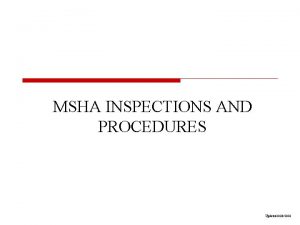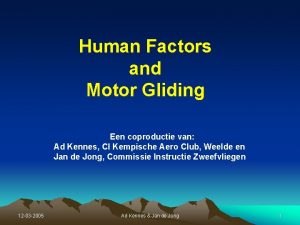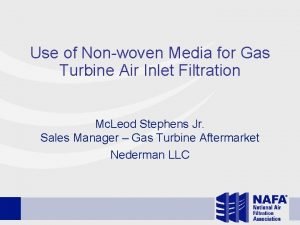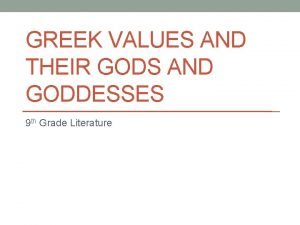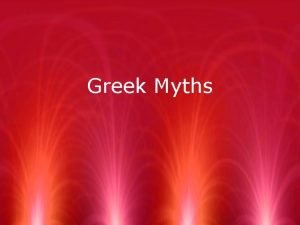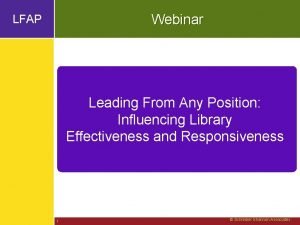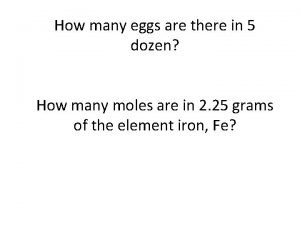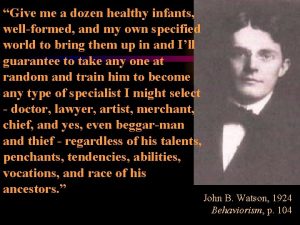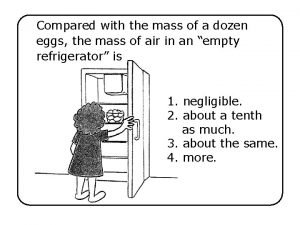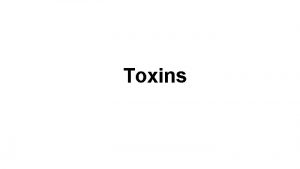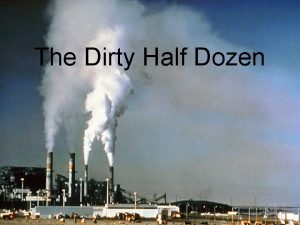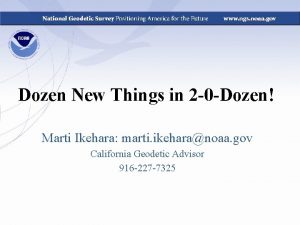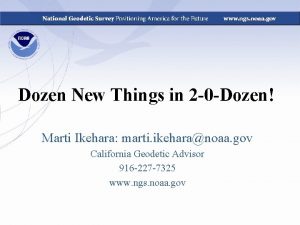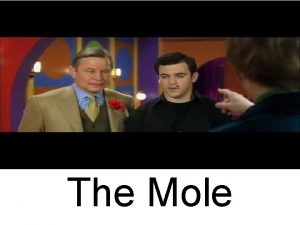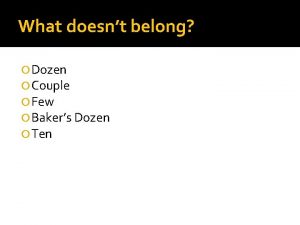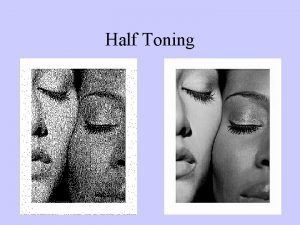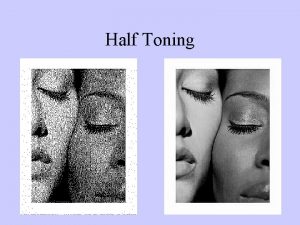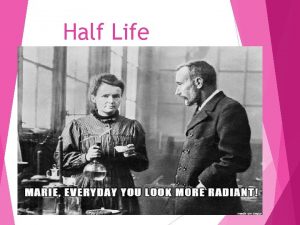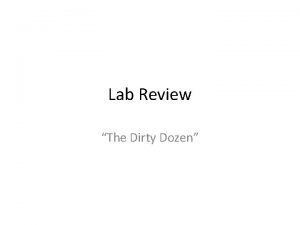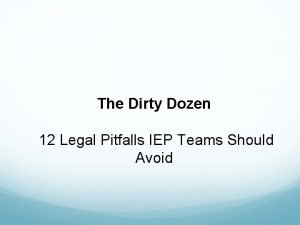The NAAQS The Dirty Half Dozen Has Air


















- Slides: 18

The NAAQS: The Dirty Half Dozen

Has Air Quality Gotten Better or Worse in Your Lifetime?

NAAQS Established April 30, 1971 Six Pollutants that are Dangerous for Public Health: 1. Lead 2. Carbon monoxide 3. Nitrogen dioxide 4. Sulfur dioxide 5. Ozone 6. Particulate Matter

#1: Lead (pb) Definition: naturally-occurring metal Sources: ore and metal processing; aviation leaded gasoline Health Impact: reduces blood’s ability to carry oxygen; can contribute to high blood pressure and heart disease. Fact: EPA banned from gasoline in the 1970 s.

#2: Carbon Monoxide (CO) Definition: colorless, odorless gas Source: motor vehicles Health Impact: blocks oxygen delivery to major organs such as the heart and brain. Fact: CO is deadly in an enclosed space with rapid, high exposure.

#3: Nitrogen Dioxide (NO 2) Definition: a reddish-brown, highly reactive gas Sources: motor vehicles, power plants Health Impact: even healthy people will experience airway inflammation when exposed to NO 2. Fact: adding oxygen to nitrogen allows it to pollute more.

Near Road NO 2 Monitoring Site

#4: Sulfur Dioxide (SO 2) Definition: a highly reactive toxic gas Sources: power plants, industrial facilities Health Impact: increase asthma symptoms Facts: SO 2 is the main cause of acid rain; scrubbers at power plants have reduced SO 2 from the air

#5: Ozone (O 3) Definition: colorless gas that occurs when pollutants mix in the presence of heat and light Sources: car exhaust, gas vapors, industrial emissions Health Impact: coughing, throat irritation, even chest pains Fact: main cause of smog alerts

#6: Particulate Matter (PM) Definition: soot, dust and dirt in the air Course particulates (between 2. 5 and 10): produced by crushing or grinding processes Fine particulates (PM 2. 5) are so small they can only be detected with an electron microscope. Sources: Course: dust from vehicles on the road or construction sites Fine: all types of combustion: cars, residential wood burning, forest fires, even fireworks Health Impact: Coughing, decreased lung function, irregular heartbeat.

Particulate Matter (PM)

Air Monitors

Air Quality Index Air Quality Good Index 0 -50 Protect Your Health 2012 2013 No health impacts are expected when air quality in this range. 127 98 260 Moderate 51 -100 Unusually sensitive people should consider limiting prolonged outdoor exertion. 206 Unhealthy for Sensitive Groups 101 -150 Active children and adults, and people with respiratory disease, such as asthma, should limit prolonged outdoor exertion. 30 7 Unhealthy 151 -200 Active children and adults, and people with respiratory disease, such as asthma, should avoid prolonged outdoor exertion; everyone else, especially children, should limit prolonged outdoor exertion. 3 0 Very Unhealthy 201 -300 Active children and adults, and people with respiratory disease, such as asthma, should avoid all prolonged outdoor exertion; everyone else, especially children, should limit outdoor exertion. 0 0 Hazardous 301 -500 Health alert: everyone may experience more serious health effects 0 0

Local Air Quality Map

Has Air Quality Gotten Better or Worse in Your Lifetime?

Air Pollution Reduction: 1990 -2010 100% 17% 90% 80% 70% 38% 33% 45% 46% 60% 50% 40% 73% 70% 75% 78% 30% 20% 83% 86% 10% 0% Lead CO NO 2 SO 2 PM Ozone

NAAQS Analysis of Pollutant Unit Measurement ppm CO (parts per million) μg/m 3 Lead (micrograms per cubic meter) ppb NO 2 (parts per billion) ppb SO 2 (parts per billion) ppb Ozone (parts per billion) μg/m 3 PM 2. 5 (micrograms per cubic meter) EPA Standard 9 ppm 8 -hour average SW Ohio 2012 . 15 μg/m 3 (rolling, 3 -month average) . 0059 μg/m 3 53 ppb annual average 75 ppb 1 -hour average 13 ppb . 99 ppm 70 ppb 75 ppb 1 35 μg/m 3 annual average 2 1 There are four counties in Southwest Ohio; here are their 2010 -2012 ozone readings: Butler: 82; Clermont: 82; Hamilton: 85; Warren: 79 2 Here is the 2012 data for PM 2. 5 per county Butler: 27; Hamilton: 30

Don’t Idle! Idling is leaving a vehicle’s engine running when it is parked or not in use. • Waiting to pick someone up • Running errands • Sitting at the drive-thru Idling a car for 30 seconds uses more gas than turning it off and on!
 Msha dirty dozen
Msha dirty dozen Dirty dozen human factors nederlands
Dirty dozen human factors nederlands Dirty air
Dirty air Hubungan air dengan tanah
Hubungan air dengan tanah Rules of the game from the joy luck club answers
Rules of the game from the joy luck club answers Types of direct retainers
Types of direct retainers Hybrid mythological creatures
Hybrid mythological creatures What is a half horse half man called
What is a half horse half man called What is a myth
What is a myth Minotaur greek mythology
Minotaur greek mythology Half man half horse name
Half man half horse name Protheros cone theory
Protheros cone theory Top half vs bottom half
Top half vs bottom half Half mens half geit narnia
Half mens half geit narnia Half empty or half full
Half empty or half full Half playful half serious
Half playful half serious 5 dozen
5 dozen Give me a dozen healthy infants well-formed meaning
Give me a dozen healthy infants well-formed meaning Mass of a dozen eggs
Mass of a dozen eggs
